Holdfast Alaska: The Family That Chose To Homestead In The Alaskan Wilderness
Authored by Ryan Cashman via The Epoch Times (emphasis ours),
It had already been a long journey by the time Dennis and Amy Westerlind reached the Port of Bellingham, Washington, on a cold November night in 2020. They had spent several days driving 3,200 miles from their homestead in Maine. Now, with their young daughter Lena snuggled safely in the back seat, they loaded their car onto a ferry and prepared for departure.
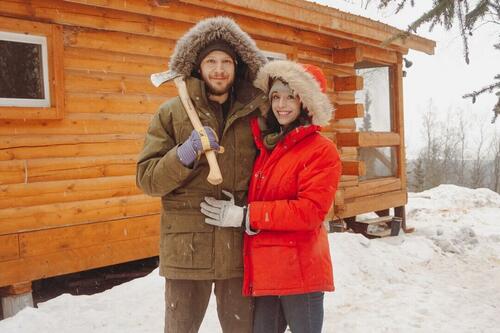
A thick darkness enveloped the ferry as they sailed into the waters of the northern Pacific. Whipping winds and strong tides had churned the sea into an aggressive obstacle. A former lobsterman, Dennis was used to choppy waters. This was different.
“There were 36-foot seas on that crossing. It was a rough ride. And we were on that boat for about five days,” he said.
Despite the harsh seas they now faced, the family continued to find strength in the shared dream that had motivated them for years. Back east, they had saved every penny to buy some overgrown acres in western Maine. Through grit and determination, they’d transformed that property into a thriving, off-grid homestead. Leaving it behind wasn’t easy.
But their hearts longed to be elsewhere—somewhere they could truly test what they were made of.
Days later, the ferry docked, and the Westerlind family drove onto the soil of a place they had never visited but always dreamed to be: Alaska.
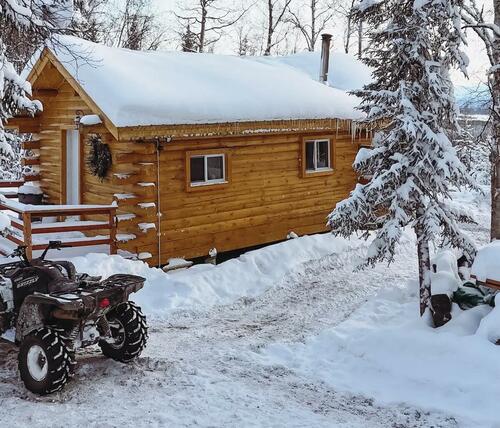
A New England Primer
The dream of living off-grid in the Alaskan wilderness had taken hold during the couple’s early years of marriage. At that point, they lived in a small apartment in eastern Massachusetts. Dennis worked as a lobsterman for his father-in-law’s fishing company. Amy was the company secretary.
This suburban lifestyle was familiar territory. Both had grown up in densely populated New England towns, and neither had a background in farming, gardening, off-grid living, animal husbandry, hunting, foraging, or homestead construction.
Yet those hurdles only strengthened their determination. They found small ways to bring more self-sufficiency into their daily lives. Amy started a garden out on their small patio, where she grew tomatoes and other vegetables in pots. As often as they could, the couple traveled to Maine and explored the wilderness. It was during those trips that they began to take their off-grid dreams seriously.
“We were just getting sick of living down near the city [Boston]. So, we started spending all our free time looking for cheap, owner-financed land we could afford. We saved money everywhere we could. I stopped getting haircuts. We didn’t go out to eat. We just paid the rent and did a lot of home cooking,” Dennis said.
Eventually, the couple amassed $5,000 in savings, which they used as a down payment on a promising property in western Maine.
“There was an old-timer who was looking to sell. We told him what we wanted to do, and he treated us really well. We just gave him the down payment, shook hands, and that was that,” said Dennis.
“We couldn’t wait to get up there,” Amy added.
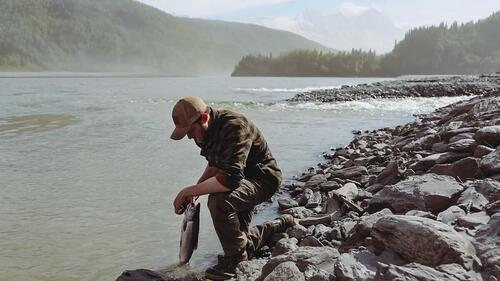
Against the advice of their families, the Westerlinds moved to their new 30-acre, off-grid homestead in March 2011. There was no infrastructure, so they spent the spring and summer living in a tent, cooking over campfires, bathing with water from the freshwater spring, and building a small cabin.
Over the next eight years, the couple completely transformed the overgrown mountainside. They dug a well, expanded the cabin, cleared acres of trees, established pasture, raised farm animals, cooked from scratch, grew herbs and vegetables, preserved their harvest, and, in 2019, welcomed their daughter, Lena, to the family.
“She was born at home in the cabin,” said Amy.
“That whole homestead was a labor of love. Everything we did was by hand and out-of-pocket,” Dennis said.
However, the family soon found that they wanted a little more space. They sold their property and paid cash for a farmhouse on 50 acres outside of Farmington, Maine. As they had before, they self-financed their home repairs, purchased a milk cow, and started a CSA market garden for income. But something else was still calling them.
“We always wanted to come to Alaska. Since we were young, healthy, and able-bodied, we decided to just do it,” Dennis explained. They sold their farmhouse, bid Maine farewell, and headed west to meet the Washington ferry that would bring them to Alaska.
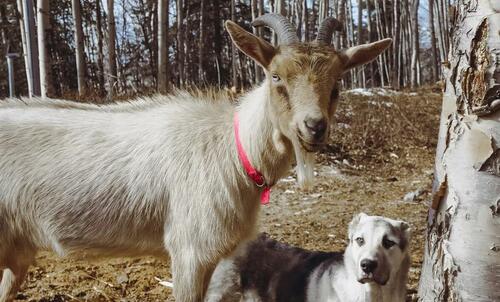
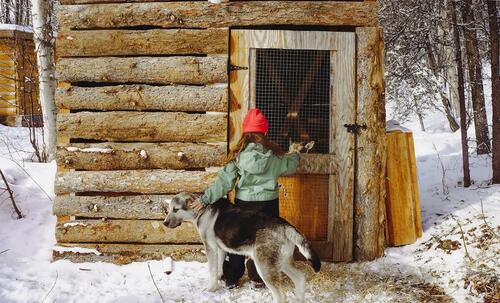
A Different World
Arriving in Alaska at the start of winter was a system shock for the Westerlinds.
As Dennis described, “It was one of the hardest things to adapt to. The sun doesn’t really come up until 10:30 a.m., and then, by about 3 p.m., it’s night again.”
“But, it was almost smarter to get here in the wintertime. We got the full blast right off the bat,” Amy added.
They purchased a 2-acre homestead on the outskirts of Kenai National Wildlife Refuge. There, they spent the next few years learning the ropes of living in coastal Alaska. They fished for salmon and hunted for moose and elk on the banks of the Kenai River. However, they soon realized that the area was a watered-down version of what they truly wanted.
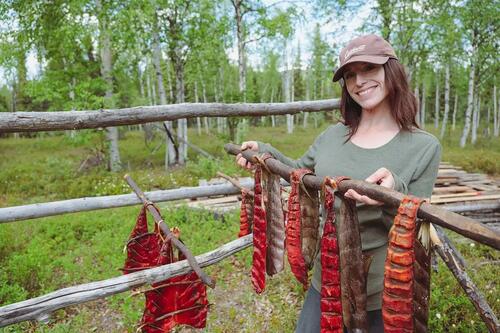
“It was a bit too crowded. Too much like Maine. We were looking for a more authentic, wild Alaskan experience,” Dennis said.
In spring of 2024, the family moved again, this time deep into the eastern Alaskan interior. They paid cash for a small, off-grid log cabin on 7 acres near the northern entrance of Wrangell–St. Elias National Park.
Owing to a lack of state resources and their remote location, the Westerlinds found themselves living in a subsistence zone, a legally drawn area where residents are allowed to subsist on what they can harvest from the land.
Dennis elaborated: “To give an example, when we lived on the Kenai, for our family size, we were allowed to dipnet and keep 45 sockeye salmon for the year. Up here we’re allowed 500.”
Hunting restrictions are looser as well. The Westerlinds’ season starts much earlier in the spring than other areas of Alaska, and they are also allowed to bag higher quantities of moose, elk, deer, porcupine, and bear.
“That was a big factor for us to move to such a remote place, because our goal, our dream, is to live off the land. We can do that here. It’s a totally different world,” Dennis said.
Off-Grid YouTubing
The move inland prompted another change in the Westerlinds’ life: the creation of a YouTube channel in September 2024. They had always utilized their land or learned skills to provide an income for themselves. Back in Maine, Amy had become an herbalist while Dennis farmed and did odd jobs. On the Kenai, they had herd-shared goats and worked in the area real estate market. Now, however, they were homesteading full-time. They decided to start vlogging.
“We bought a GoPro and just started taking videos of ourselves messing around on the homestead, and people took to it,” Dennis said.
They named their YouTube channel Holdfast Alaska. Unlike many other homesteading content creators, the Westerlinds chose not to focus on gardening and livestock rearing. Instead, they wanted to show what it takes to live a subsistence lifestyle on a remote homestead: 17-hour supply runs to Anchorage; building an A-frame chicken coop with a living roof for insulation during the harsh winters; hunting moose and porcupine for dinner.
However, more than just showing their lives in inland Alaska, the Westerlinds wanted to use their platform to add value to people’s lives.
“I wanted to make the channel somewhere we could teach and help people learn to can, forage, or use herbal medicine,” Amy said. “We wanted to give value to people who want to live a similar life, or even people who don’t live this way. Providing inspiration is huge, because that’s what got us started.”
A good portion of their video library consists of Amy utilizing the food they’ve grown, foraged, or hunted to make moose chili, salmon dip, sourdough donuts, lacto-fermented pickles, and so much more.
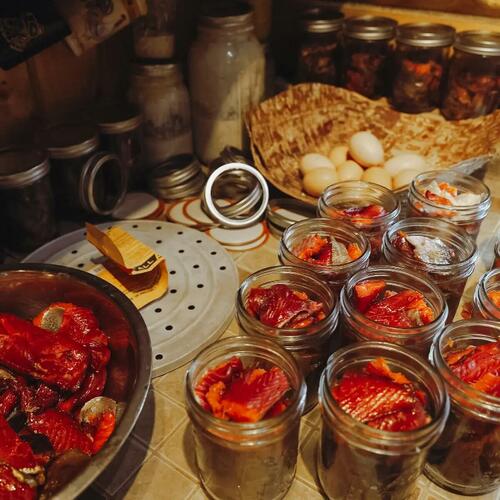
In under a year, their channel gathered 52,000 subscribers, which neither expected.
“We definitely got more support from the general public than I thought we would when we made this channel,” said Dennis.
While they don’t show Lena’s face on their channel for safety reasons, her small, excited voice can be heard echoing in the background of their videos.
“We really enjoy raising her in a wild place like this,” Amy said.
Dennis added, “It makes her capable, you know? She’s tough. She handles the cold better than we do.”
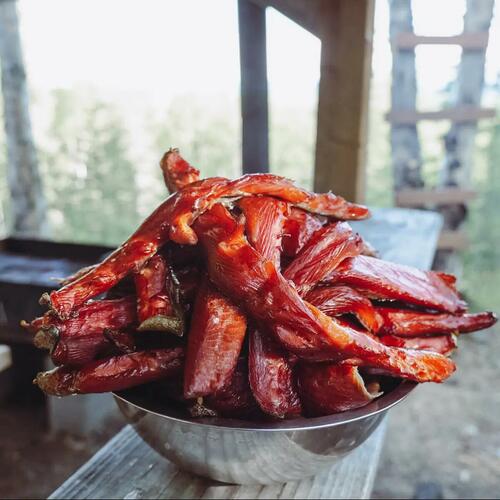
A Dream Come True
The Westerlinds have no illusions; they know their lifestyle isn’t for everyone. In fact, despite dreaming of homesteading in Alaska for ages, they can hardly believe they’ve actually achieved it.
“When we lived in Massachusetts, if you had told us that we were going to end up living here, we’d have said, ‘No way!’” Dennis said. “But, you know, you get to Alaska and you start to understand how to exist among all this wilderness.”
The family has its fair share of struggles. There is the underlying danger of charging moose, hungry bears getting into the chicken coop, or summer forest fires destroying acreage. There’s also the constant learning and adaptation that comes with remote living. However, the Westerlinds are ready to meet their challenges head on.
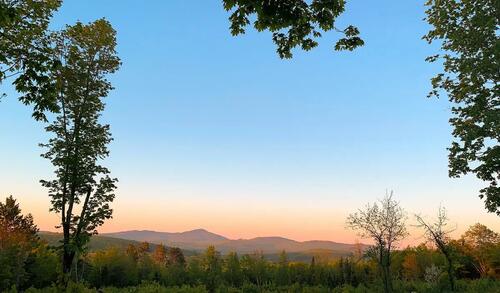
“We’re very hardworking. We have a lot of grit. And with the homestead, Dennis and I feel very rewarded that the hard work we put in directly relates to how we live day-to-day,” Amy said.
“If we had listened to everybody who told us right from the start not to move to Maine, don’t buy land, don’t move to Alaska, we wouldn’t have done anything,” Dennis said. “We didn’t listen to them. We just worked hard. If you have something you want to do, you have to do more than others are doing in order to achieve it.”
For this family, a dream is worth nothing unless you have the determination to achieve it.
This article was originally published in American Essence magazine.
Tyler Durden
Sun, 10/12/2025 – 19:55ZeroHedge NewsRead More





 T1
T1


